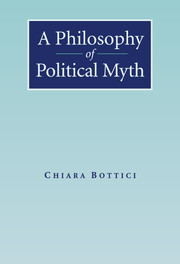5 - Approaching Myth
Published online by Cambridge University Press: 24 July 2009
Summary
As we have seen, myths as such could not be recognised within a Christian world view because of their deceitful plurality of stories. However, it is precisely this plurality that characterises myth, in contrast to the point of view of a sacred logos. This does not simply mean that myths are the objects of different interpretations, but also that, phenomenologically speaking, myths present themselves as a plurality both of variants and of mythologems.
To catch the intrinsic plurality of myth one cannot simply analyse single myths, that is, the stories that we can fortuitously collect or find in books. These are only the final products of myth, the reified traces of the work of myth. As Blumenberg pointed out with his idea of myth understood as “work on myth”, a myth is best understood as a process that is, at the same time, an act of saying and an act of doing (Blumenberg 1985). This is a process of continually reworking that involves a multiplicity of subjects. There are narrators, on the one hand, and receivers or potential re-narrators, on the other – without there being any possibility of tracing any sharp division between the two.
As Blumenberg put it, it is precisely in the relationship between narrators and receivers that we should look for the specificity of myth: the myth is the “work on myth” (Arbeit am Mythos), that is, work of myth and at myth.
- Type
- Chapter
- Information
- A Philosophy of Political Myth , pp. 99 - 115Publisher: Cambridge University PressPrint publication year: 2007

